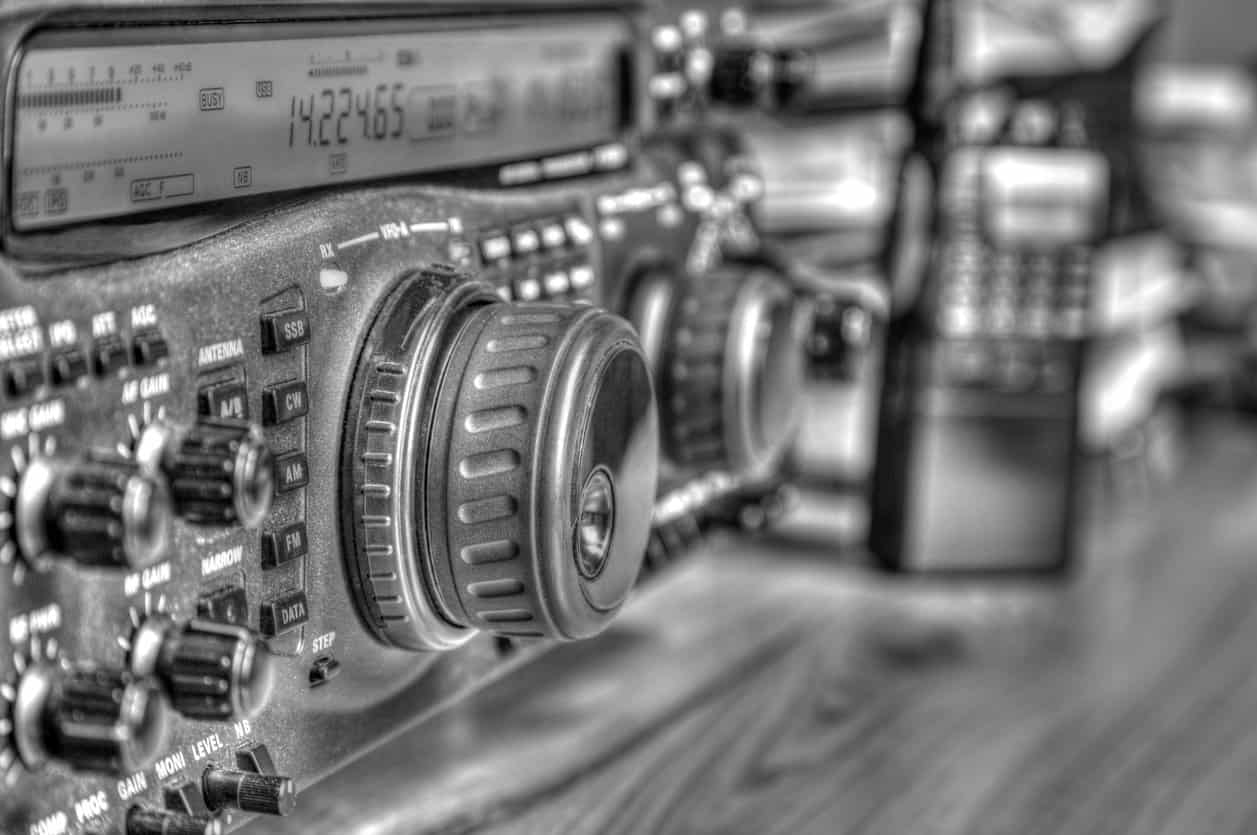Ham radio, also known as amateur radio, is a popular hobby and communication method that allows enthusiasts to communicate with other operators around the world. Getting started with ham radio requires obtaining the right equipment, but with so many options available, it can be overwhelming to know where to begin shopping for transceivers, antennas, and other necessary gear. This comprehensive guide will help both beginners and seasoned operators find the best sources for all their ham radio needs.
When purchasing ham radio equipment, there are several factors to consider, such as your budget, the type of equipment you require (e.g., handheld, mobile, or base station transceivers), and whether you prefer new or used gear. Shopping from reputable sources is crucial, as doing so ensures you receive high-quality, reliable equipment. In addition, consider checking reviews and seeking advice from experienced operators to make informed decisions.
There are a variety of both online and brick-and-mortar retailers where you can purchase ham radio equipment. Some popular online sources include Ham Radio Outlet, Ham Radio Hut, HamCity, and DX Engineering. These retailers offer a wide range of amateur radio gear, including transceivers, antennas, amplifiers, and accessories from well-known brands like ICOM, Yaesu, Alinco, and Kenwood. In addition to these options, you may also find used equipment on online auction sites like eBay, as suggested by the American Radio Relay League (ARRL).
Understanding Ham Radio Equipment
Ham radio equipment can vary depending on the user’s preferences and requirements. This section aims to provide a brief overview of the different types of equipment used in amateur radio and the basic setup requirements.
Types of Equipment
There are several key pieces of equipment needed for a successful ham radio setup. These include:
- Transceiver: A device that combines both a transmitter and a receiver. Transceivers come in various forms, such as handheld, mobile, or base station units. Popular brands for transceivers include ICOM, Yaesu, Alinco, and Kenwood. (source)
- Antenna: A critical component for transmitting and receiving radio signals. There are many types of antennas available, ranging from simple wire dipole antennas to more advanced multi-element directional antennas.
- Power Supply: Necessary for powering the transceiver and other equipment. Power supplies can be either AC or DC, with varying output voltages and current capacities.
- Amplifier: Optional equipment used to boost the power of a transmitted signal. While not necessary for all users, amplifiers can help increase signal range and make weak signals more readable.
- Accessories: Additional equipment such as microphones, headphones, and Morse code keys can enhance your ham radio operation and make it more enjoyable.
Basic Setup Requirements
Setting up a ham radio station involves a few fundamental steps, regardless of the specific equipment chosen:
- Selecting a location: Choose a suitable location for your station, taking into consideration factors such as available space, proximity to sources of radio interference, and accessibility for antenna installation.
- Assembling equipment: Gather all necessary equipment, including your transceiver, antenna, power supply, and any desired accessories. Some equipment may require assembly or installation, such as erecting an outdoor antenna or connecting a power supply to your transceiver.
- Power connections: Ensure that all equipment is properly connected to a power source, taking care to follow the manufacturer’s guidelines and any applicable safety precautions.
- Antenna setup: Install and connect your chosen antenna, following the manufacturer’s recommendations and considering factors such as grounding and lightning protection.
- Testing and tuning: Turn on your equipment and verify proper operation. Perform any necessary tuning or adjustments, such as setting the transceiver’s frequency and output power, and begin enjoying your ham radio hobby!
Local Retailers and Stores
When looking for ham radio equipment, local retailers and dedicated stores can be a viable option. Many retailers have experts on staff who can guide you through the selection process and help you choose the right equipment for your needs.
One popular local retailer is Ham Radio Outlet, which offers an extensive range of transceivers, antennas, power supplies, and accessories from top brands like Yaesu, ICOM, and Alinco. Apart from their online store, they have physical locations across the United States.
Ham Radio Hut is another store where you can find new and used amateur radio equipment, parts, and accessories from popular brands like Kenwood, ICOM, and Yaesu. They offer a wide range of products, including handheld, mobile, and base transceivers, amplifiers, and antennas.
For HAM radio supplies and accessories, Walcott Radio is a reputable retailer with a vast selection of UHF/VHF radios, antennas, and Alinco microphones. They have been serving the amateur radio community since 1986 and are known for their high-quality products and services.
In addition to these dedicated stores, you can also visit general electronics retailers or local listings, such as Craigslist or Facebook Marketplace, to find used or new equipment. While visiting local retailers, don’t forget to inquire about installation services, ongoing support, and warranty options for your purchased equipment.
Section 4: Online Shopping Options
Specialized Online Stores
There are several specialized online stores that cater to ham radio enthusiasts. These stores offer a wide range of products from popular brands such as ICOM, Yaesu, Alinco, and Kenwood. A couple of notable stores include Ham Radio Outlet and Ham Radio Hut, which offer both new and used amateur radio equipment, parts, accessories, and more.
General Electronics Websites
In addition to specialized stores, you can also find ham radio equipment on general electronics websites. These websites may offer a more limited selection compared to specialized stores, but they are worth checking out for certain items or deals. Some popular options include online retailers like Amazon and eBay.
Auction Platforms
Auction platforms like eBay can be a great place to find used and vintage ham radio equipment at competitive prices. Make sure to read the product descriptions carefully and check the seller’s reputation before placing a bid. As mentioned by the American Radio Relay League (ARRL), older transceivers can still provide years of useful service, making them a viable option for your ham radio needs.
Marketplaces
Online marketplaces and classifieds such as QRZ.com and QTH.com offer platforms where users can buy and sell used ham radio equipment directly with each other. These sites may require a bit more vigilance and research, as there isn’t always a centralized reputation system in place for sellers. However, they can be a good place to find unique items, deals, or rare equipment.
Section 5: Used Equipment Sources
Ham Radio Clubs and Swap Meets
One of the best ways to find used ham radio equipment is by connecting with local ham radio clubs and attending swap meets. Ham radio clubs are a great resource for meeting experienced operators who may be selling their equipment or can point you in the right direction. Swap meets, also known as hamfests, are events where enthusiasts gather to buy, sell, and trade used equipment.
Many clubs organize these events, making it an excellent opportunity to find used gear at reasonable prices. To find a local club or swap meet near you, check out the American Radio Relay League (ARRL) club search page.
Online Forums and Classifieds
Online forums and classifieds websites dedicated to ham radio are another valuable source for purchasing used equipment. Many operators post listings for their used gear at competitive prices, allowing you to compare different options and make an informed decision.
Some popular online sources for used ham radio equipment include:
- Ham Radio Hut – Offers a wide range of new and used amateur radio equipment, parts, accessories, and more.
- Ham Radio -Features a variety of used radios, power supplies, antennas, and other gear for sale.
- Ham Estate – Includes an online store with used equipment from the estates of silent key operators.
- QRZ Swap – Offers a forum-style platform for ham operators to post classified ads for used equipment.
Remember to double-check the condition, seller reviews, and other relevant details before making a purchase, as online transactions carry inherent risks. By utilizing these resources and connecting with fellow enthusiasts, you’ll be well on your way to finding the perfect used ham radio equipment.
Tips for Buying
When looking for ham radio equipment, there are several factors to consider before making a purchase. This section provides some valuable tips to help you make informed decisions while buying ham radio equipment.
Consider Your Needs and Skill Level
Before purchasing ham radio equipment, it’s essential to assess your needs and skill level. Are you a beginner or an experienced user? Depending on your needs, you may be more interested in certain features, such as ease of use, power output, or versatility. Additionally, your budget will also factor into your decision. As a beginner, you might start with an affordable handheld radio, while a more experienced user might opt for a multi-band base station for longer-range communications. The American Radio Relay League suggests searching for older transceivers, which can still offer years of useful service at a lower price.
Compare Prices and Warranty Options
It’s crucial to compare prices and warranty options when shopping for ham radio equipment. Retailers may offer different prices, so it’s important to shop around and find the best deal for your needs. Additionally, warranty options can vary widely between manufacturers and vendors; therefore, it’s crucial to also consider the extent and duration of the warranty coverage along with the cost of the equipment.
Some potential sources for buying ham radio equipment include online auction sites like eBay, local ham radio clubs or forums, and established dealers in radio communication equipment. Regardless of where you decide to purchase your ham radio, always do your research and cross-reference reviews from multiple sources to ensure you’re making an informed decision.
Conclusion
After going through the comprehensive guide on buying ham radio equipment, you should now have a good understanding of the essential tools and devices needed, and where to purchase them. Reliable and reputable sources such as American Radio Relay League provide guidance on selecting the right equipment based on your needs.
As a beginner, it is crucial to do thorough research and consult experienced operators for advice, as emphasized in Ham radio Secrets and Moonraker. By doing so, you can make informed decisions on the type of transceiver, antenna, and other accessories necessary for your set-up.
Remember to prioritize quality and functionality in your purchase, and comply with legal requirements like obtaining a ham radio license. Additionally, don’t hesitate to explore online forums, clubs, and local radio events to connect with fellow operators who can provide support and guidance in your journey. Enjoy the rewarding hobby of ham radio, and happy transmitting!





